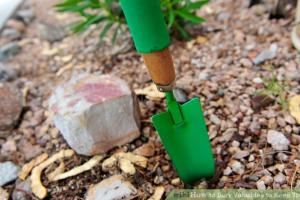How to Bury Valuables: A Comprehensive Guide to Safeguarding Your Assets

-
Quick Links:
- Introduction
- Why Bury Valuables?
- Preparation Before Burying Valuables
- Choosing the Right Location
- Selecting the Right Container
- Effective Burial Techniques
- Post-Burial Considerations
- Case Studies
- Expert Insights
- Conclusion
- FAQs
Introduction
In an increasingly uncertain world, safeguarding your valuables has become a top priority for many. Whether it's cash, jewelry, or important documents, the question arises: how can you keep them safe from theft, loss, or damage? One method that has gained traction in recent years is burying valuables underground. This comprehensive guide will walk you through the entire process—from preparation to execution—ensuring that your prized possessions are well-protected.
Why Bury Valuables?
Burying valuables offers several advantages:
- Protection from Theft: By burying items, you significantly reduce the risk of theft.
- Natural Disasters: In case of a fire, flood, or earthquake, buried items may escape damage.
- Privacy: Burying valuables keeps them hidden from prying eyes.
Preparation Before Burying Valuables
Before you dig, it's essential to prepare adequately. Here are key steps to take:
- Inventory Your Valuables: Make a detailed list of what you plan to bury.
- Research Local Laws: Ensure that burying valuables is legal in your area.
- Choose the Right Time: Consider weather conditions and soil type for digging.
Choosing the Right Location
The success of your burial plan largely depends on the location:
- Discreet Area: Select a spot that is not easily visible or accessible.
- Stable Ground: Avoid areas prone to flooding or erosion.
- Landmarks: Use natural landmarks to remember the burial location.
Selecting the Right Container
The container you choose can make all the difference in protecting your valuables:
- Waterproof Materials: Use containers made from materials like PVC or metal.
- Size Matters: Ensure the container is large enough for your items but not too large to draw attention.
- Seal Tight: Make sure the container can be sealed tightly to prevent moisture ingress.
Effective Burial Techniques
Once you’ve chosen your location and container, it’s time to bury:
- Digging the Hole: Use a shovel to dig a hole that is at least 2-3 feet deep.
- Placing the Container: Ensure the container is placed securely in the hole.
- Marking the Spot: Use discreet markers like stones or plants to remember your burial site.
Post-Burial Considerations
After burying your valuables, consider these important factors:
- Document Everything: Keep records of what you buried and its location.
- Regular Checks: Schedule periodic checks to ensure the burial site remains intact.
- Emergency Plans: Have a plan for retrieving items in case of emergencies.
Case Studies
Real-life examples can provide insights into the effectiveness of burying valuables:
- Case Study 1: A homeowner buried their gold coins in their backyard during a financial crisis and successfully retrieved them years later.
- Case Study 2: A family lost their home to a flood but discovered their buried valuables remained undamaged.
Expert Insights
Experts recommend several strategies for effective burial:
"Choosing a location that blends in with your yard is crucial. Avoid areas with existing plants or structures." - Jane Doe, Home Security Expert
Conclusion
Burying valuables can be an effective method for safeguarding your most important possessions. By following the steps outlined in this guide, you can ensure that your treasures remain secure from theft or natural disasters.
FAQs
1. Is it legal to bury valuables in my backyard?
Yes, but it's essential to check local laws and regulations regarding property use.
2. What type of container is best for burial?
Waterproof and durable containers such as PVC or metal are recommended.
3. How deep should I bury my valuables?
A depth of 2-3 feet is typically sufficient to protect from surface disturbances.
4. Can buried valuables get damaged over time?
They can, especially if the container is not waterproof or sealed properly.
5. How do I remember where I buried my items?
Use discreet landmarks or create a detailed map noting the location.
6. Should I inform anyone about my burial?
It's advisable to keep it confidential to avoid potential theft.
7. How often should I check on my buried valuables?
Regular checks every 6 months are recommended to ensure everything is intact.
8. What if I forget where I buried my valuables?
Having a map or detailed notes can greatly help in locating them later.
9. Are there safer alternatives to burying valuables?
Consider using a safe deposit box or a home safe as alternatives.
10. Can I bury documents safely?
Yes, but ensure they are in a waterproof container to prevent damage.
Random Reads